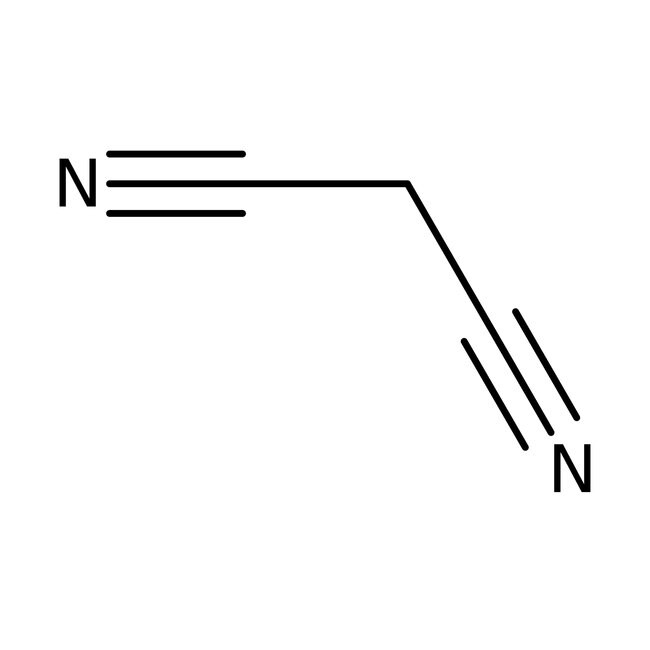Search Thermo Fisher Scientific
Malonsäuredinitril, 99 %, Thermo Scientific Chemicals



Malonsäuredinitril, 99 %, Thermo Scientific Chemicals
Chemikalien-Kennzeichnungen
Spezifikationen
Beschreibung
This Thermo Scientific Chemicals brand product was originally part of the Alfa Aesar product portfolio. Some documentation and label information may refer to the legacy brand. The original Alfa Aesar product / item code or SKU reference has not changed as a part of the brand transition to Thermo Scientific Chemicals.
Vernetzungsmittel zur Modifikation von Proteinen über Malononitril wird als Vorstufe bei der Herstellung von Krebsmedikamenten, Triamteren, Adenin, Methotrexat, Thiamin, Acrylfasern und Farbstoffen verwendet. Es wird bei der Knoevenagel-Kondensation verwendet, um 2-Chlorbenzalmalonitril durch Reaktion mit 2-Chlorbenzaldehyd herzustellen. Es fungiert als Auslaugemittel für Gold. Es wird als Rohmaterial für die Gewald-Reaktion von Ketonen oder Aldehyden zur Herstellung von 2-Aminothiophen unter Verwendung von elementarem Schwefel und einer Base verwendet. Darüber hinaus spielt es eine wichtige Rolle bei der Herstellung von [1,6]-Naphthyridinen, Gamma-Ketoamiden, 1,4-Dihydropyridin, Chromeno[2,3-b]Pyridin und Dihydro-1,4-Dithiepin-Gerüsten.
Löslichkeit
Löslich in Wasser, Aceton, Essigsäure, Chloroform, Ethanol, Ether und Benzol.
Hinweise
Kühl lagern. Inkompatibel mit starken Oxidationsmitteln, starken Reduktionsmitteln, starken Säuren und starken Basen.
Abbildungen
Dokumente und Downloads
Zertifikate
Häufig gestellte Fragen (FAQ)
Zitierungen und Referenzen
Sicherheit und Handhabung
Classification of the substance or mixture
CLP classification - Regulation(EC) No 1272/2008
Label Elements
Signal Word
Danger
Hazard Statements
H301 + H311 + H331 - Toxic if swallowed, in contact with skin or if inhaled
H410 - Very toxic to aquatic life with long lasting effects
Precautionary Statements
P273 - Avoid release to the environment
P280 - Wear protective gloves/protective clothing/eye protection/face protection
P301 + P310 - IF SWALLOWED: Immediately call a POISON CENTER or doctor/physician
P302 + P350 - IF ON SKIN: Gently wash with plenty of soap and water
P304 + P340 - IF INHALED: Remove victim to fresh air and keep at rest in a position comfortable for breathing